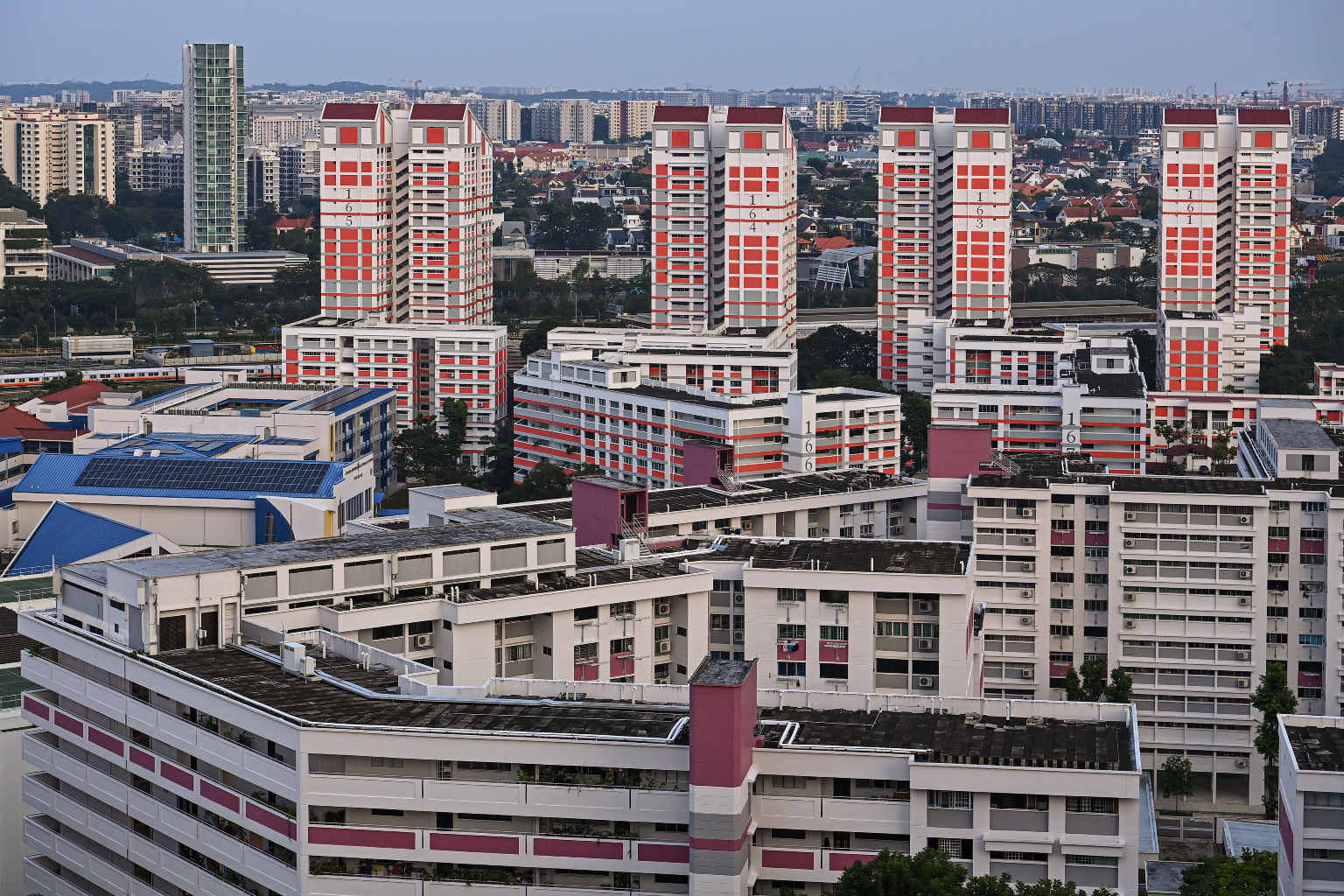Public housing should be protected as heritage for future generations: DP Architects CEO
Sign up now: Get ST's newsletters delivered to your inbox

About 80 per cent of Singaporeans live in public housing at present.
ST PHOTO: LIM YAOHUI
Follow topic:
SINGAPORE - Singapore's public housing started as "a very efficient machine" to house the population, but has grown to become something that emotionally connects many generations of Singaporeans, making aspects of it a suitable candidate for conservation, said DP Architects chief executive Seah Chee Huang.
He was speaking on Monday (Jan 24) at a panel on city planning, as part of the Singapore Perspectives 2022 forum organised by the Institute of Policy Studies (IPS) at the Lee Kuan Yew School of Public Policy.
The forum was held at Sands Expo and Convention Centre at Marina Bay Sands.
Responding to a question by Dr Woo Jun Jie - the panel's moderator - on whether there are buildings that reflect the spirit of present-day Singapore and could thus be protected as heritage, Mr Seah said Singapore's public housing is distinctive both as a form of urban architecture and as a type of social infrastructure.
About 80 per cent of Singaporeans live in public housing at present, and older estates are rejuvenated through various schemes such as the Selective En bloc Redevelopment Scheme (Sers).
Having grown up in a public housing estate, Mr Seah said public housing is an integral aspect of many Singaporeans' lives, adding that even as new estates are built, "fabrics of the old" should be kept.
Ms Hwang Yu-Ning, chief planner and deputy chief executive of the Urban Redevelopment Authority (URA), which is Singapore's conservation authority, said that while public housing is undoubtedly a common experience for Singaporeans, whether that shared experience can be encapsulated in a particular building or several buildings remains to be seen and is open to further debate.
While some public housing blocks have been conserved in Tiong Bahru, they were built by the Singapore Improvement Trust (SIT) during the pre-war years. A cluster of SIT-built blocks in Dakota Crescent will also be retained and repurposed, although they have not been formally gazetted for conservation.
Mr Seah said that a number of public housing estates are distinctive and evoke strong social memories, including the town centre of Toa Payoh New Town, which houses one of Singapore's oldest MRT stations, and People's Park in Park Road, the first mixed-use complex built by the HDB.
Ms Hwang also answered a question on whether Singapore requires shorter planning cycles to keep up with a dynamic environment.
Currently, Singapore's masterplan, which guides the country's development over the next 10 to 15 years, is reviewed every five years, while the long-term plan, which considers the next 50 years and beyond, is reviewed every decade.
Ms Hwang said that in between reviews, URA actively conducts studies and continually reviews its plans. These may include developing masterplans for specific precincts and reviewing policies for various zones.
The masterplan and concept plan reviews are meant to be much more major, taking into account emerging trends and challenges, said Ms Hwang, who added that distance between reviews is thus required to account for the scale of the reviews.
She said the URA is aware of the dynamic nature of situations, and constantly works to ensure that its plans remain relevant.
Taking a question on how the Government makes objective decisions while simultaneously engaging various interest groups, where discussions may become highly politicised, Ms Hwang said it is important to bring different voices with different interests together.
Last July, the Government announced that it had revised its plans for Dover Forest, which is zoned for housing. Plans were tweaked after scientific studies and nature enthusiasts flagged its conservation value.
For now, only the eastern half of the 33ha site would be developed for housing in the near term, while the western half would be set aside to preserve its biodiversity.
While engaging interest groups, the Government's role, Ms Hwang said, is to try and bring in balanced perspectives, and hear from the rest of the community, as well as to take a science-based approach in prioritising different needs.
"I do feel strongly that it's important for the different groups to have an opportunity to hear from each other, and to see what are all the different challenges and needs that we face as a community and as a nation," she said.

